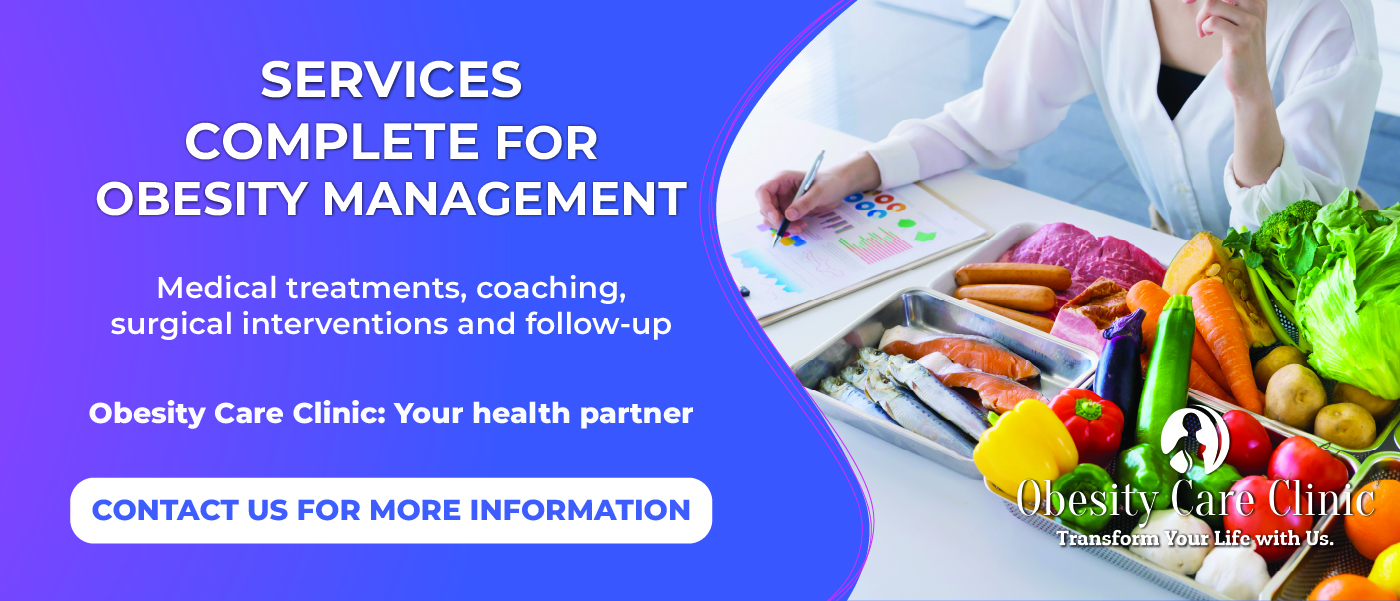Introduction
The advent of glucagon-like peptide-1 (GLP-1) receptor agonists marks a pivotal evolution in the management of type 2 diabetes and obesity. These therapies offer powerful effects not only on glycemic control but also on weight loss and appetite modulation. As their use becomes increasingly widespread, healthcare providers and patients face a new challenge: how to build and maintain a balanced diet that complements the unique physiological effects of GLP-1 therapy. This task is critical, as poor dietary adaptation can lead to nutrient deficiencies, reduced energy, and suboptimal therapeutic outcomes.
GLP-1 therapies are known for promoting satiety and reducing appetite, often leading to significant reductions in caloric intake. While this is advantageous for individuals aiming to lose weight or manage blood glucose, it also raises concerns about maintaining adequate nutrient intake, especially when the quantity of food consumed is dramatically reduced. Individuals undergoing GLP-1 therapy need to shift their focus from quantity to quality—choosing foods that deliver high nutritional value within smaller portions.
This article provides a comprehensive framework for building a balanced diet tailored to the physiological effects and clinical context of GLP-1 therapy. By examining the interactions between GLP-1 medications and nutrient metabolism, the foundational principles of balanced nutrition, and practical case-based applications, we aim to empower both healthcare professionals and patients with actionable strategies for optimal dietary planning.
The pre-op diet is more than just a recommendation; it is a clinical necessity. Implemented in the days or weeks leading up to surgery, this diet plays a central role in reducing surgical risks, improving patient safety, and laying the groundwork for long-term behavioral change. It also allows clinicians to assess patient readiness and compliance—key indicators of post-operative success. This article explores the physiological, nutritional, psychological, and clinical importance of the pre-op diet, supported by evidence and practical strategies.
Overview of GLP-1 Therapy and Its Impact on Diet
GLP-1 is a naturally occurring incretin hormone secreted by intestinal L-cells in response to nutrient ingestion. It enhances glucose-dependent insulin secretion, suppresses glucagon production, and slows gastric emptying—all of which contribute to better glycemic control. Pharmacological analogs such as liraglutide and semaglutide mimic the activity of endogenous GLP-1 and are administered via subcutaneous injection to aid in diabetes and obesity treatment.
The appetite-suppressing effects of GLP-1 receptor agonists are among their most clinically significant benefits. By acting on the hypothalamus and other brain regions associated with hunger regulation, GLP-1 therapy helps reduce food cravings and promotes early satiety. In clinical settings, this leads to substantial weight loss when combined with lifestyle interventions. However, the same mechanisms that reduce appetite and caloric intake may also interfere with proper nutrient consumption if not carefully managed.
Delayed gastric emptying, another effect of GLP-1 therapy, contributes to feelings of fullness but can also provoke nausea and reduce patients’ willingness to eat. These gastrointestinal symptoms are typically most prominent during the early phase of treatment or following dosage increases. Consequently, a tailored dietary strategy must take into account both the pharmacodynamics of GLP-1 medications and the evolving dietary tolerance of the patient over time【1】.
Principles of a Balanced Diet
A balanced diet is one that provides adequate quantities of macronutrients (carbohydrates, proteins, and fats) and micronutrients (vitamins and minerals) to sustain physiological functions, prevent deficiencies, and support long-term health. This principle remains unchanged for individuals undergoing GLP-1 therapy, but the method of achieving it requires adaptation to the therapy’s appetite-reducing effects.
For patients with a reduced desire to eat, nutrient density becomes paramount. This means choosing foods that offer high levels of vitamins, minerals, and protein relative to their caloric content. Prioritizing lean proteins, such as poultry, fish, legumes, and low-fat dairy, is essential for muscle preservation during weight loss. Whole grains and fresh vegetables provide fiber, essential for maintaining gastrointestinal health and enhancing satiety.
Fats, often feared in weight loss diets, should not be overlooked. Unsaturated fats from sources like olive oil, avocado, and nuts support hormone production and cardiovascular health. Patients should also monitor fluid intake, as dehydration can exacerbate nausea and other gastrointestinal symptoms commonly experienced during GLP-1 therapy.
Meal timing and portion control also require careful consideration. Rather than consuming three large meals per day, patients may benefit from smaller, more frequent meals that align with the slower gastric emptying promoted by GLP-1 agents. This helps avoid bloating and discomfort while ensuring steady nutrient intake throughout the day【2】.
Interactions Between GLP-1 Therapy and Nutrient Intake
The physiological effects of GLP-1 therapy—namely, delayed gastric emptying, increased satiety, and reduced appetite—profoundly influence dietary habits. These effects, while beneficial for caloric control, can pose risks for undernutrition if dietary intake is not properly managed. In particular, patients may unintentionally consume inadequate protein, fiber, iron, calcium, and fat-soluble vitamins (A, D, E, and K).
Furthermore, GLP-1 therapy can alter food preferences. Many patients report reduced cravings for high-fat and high-sugar foods, which can be advantageous in reducing processed food intake but may also decrease overall caloric intake below the required threshold for maintaining muscle mass and metabolic function. As such, intentional dietary planning becomes essential.
Certain micronutrients require special attention. Vitamin B12 absorption may be reduced due to slowed gastric motility and changes in stomach pH, particularly in older adults or those on metformin. Calcium absorption, which relies partly on gastric acidity and transit time, may also be affected. Regular monitoring of these micronutrients and supplementation when necessary should be part of a comprehensive dietary management plan.
To support these adaptations, dietary diversity is key. Encouraging variety within food groups not only improves nutrient intake but also enhances palatability and meal satisfaction—critical factors for individuals with diminished appetite. A strategic focus on whole foods, such as vegetables, fruits, lean meats, dairy, and whole grains, provides a reliable base for nutritional adequacy【3】.
Strategies for Building a Balanced Diet on GLP-1 Therapy
Developing an effective dietary plan during GLP-1 therapy involves several interrelated strategies:
A. Emphasize Nutrient Density
Given the reduced food intake, patients must select foods that are rich in essential nutrients per calorie. Leafy greens, cruciferous vegetables, legumes, nuts, seeds, lean meats, and fortified cereals should form the cornerstone of every meal. These foods provide not only vitamins and minerals but also antioxidants and fiber that support metabolic and cardiovascular health.
B. Include Adequate Protein
Protein is vital for preserving lean body mass during weight loss. Patients should aim to consume protein with every meal and snack. Recommended sources include eggs, tofu, fish, Greek yogurt, beans, and poultry. Inadequate protein intake can contribute to muscle wasting, fatigue, and metabolic slowdown—outcomes that counteract the benefits of GLP-1 therapy.
C. Balance Macronutrients
While GLP-1 therapy may reduce carbohydrate cravings, complex carbohydrates remain an essential part of a balanced diet. Whole grains, sweet potatoes, and legumes should replace refined carbohydrates. Fats should primarily come from unsaturated sources, while saturated fats and trans fats should be minimized.
D. Manage Meal Timing
Patients may find it easier to tolerate small, frequent meals rather than three large ones. Each meal should be balanced with carbohydrates, proteins, and healthy fats. This approach reduces the risk of nausea, promotes satiety, and improves nutrient absorption.
E. Monitor Hydration
Adequate hydration supports digestive health and reduces symptoms such as constipation and dizziness. Patients should consume at least 1.5 to 2 liters of water daily, adjusting based on physical activity and climate.
F. Use Supplements When Necessary
In cases of nutrient deficiencies or restricted dietary patterns, supplementation may be warranted. This is particularly true for vitamin B12, vitamin D, iron, and calcium. Healthcare providers should base supplement recommendations on laboratory findings and individual risk profiles.
G. Behavioral Strategies
Incorporating mindful eating, meal prepping, and food journaling can enhance dietary adherence and awareness. These practices help patients identify hunger cues, prevent overeating, and maintain consistency with food choices.
In summary, the best dietary strategies for GLP-1 users are those that combine flexibility with evidence-based nutrition. Tailored meal plans, regular follow-ups, and education are central to sustaining long-term dietary changes【4】.
Case Studies and Practical Examples
Case Study 1: Type 2 Diabetes and Reduced Appetite
A 60-year-old female with type 2 diabetes began semaglutide therapy. Within four weeks, she reported significant appetite suppression and nausea after large meals. A dietitian intervened to reconfigure her diet into five small meals per day, focusing on Greek yogurt, whole grain toast, eggs, and vegetable soups. Over six months, she lost 9 kg, reduced her HbA1c by 1.2%, and reported increased energy levels. Her vitamin D and calcium levels were maintained with fortified milk and supplements.
Case Study 2: Obesity with Emotional Eating
A 45-year-old male with a BMI of 38 struggled with emotional eating and late-night snacking. After initiating liraglutide, his cravings diminished, but he also skipped meals and experienced fatigue. A nutrition consultation helped him establish structured meal times with fiber-rich smoothies, lean meat sandwiches, and trail mix snacks. He also incorporated mindfulness techniques to prevent undereating. After three months, his weight dropped by 7 kg, and his emotional eating episodes decreased.
Case Study 3: Young Adult with Nutritional Deficiencies
A 28-year-old woman on GLP-1 therapy for obesity reported low iron and B12 levels. Her diet was predominantly plant-based and lacked variety. A dietary overhaul introduced lentils, dark greens, fortified cereals, and B12 supplements. She also transitioned to smaller meals with controlled portions. Follow-up tests after 12 weeks showed improved micronutrient status and increased satiety without gastrointestinal distress.
These examples underscore that successful dietary planning during GLP-1 therapy requires personalization, continual monitoring, and flexibility. Each case reflects how small but strategic adjustments in food type, timing, and supplementation can significantly enhance therapeutic outcomes【5】.
Conclusion
GLP-1 therapy is a powerful adjunct in the management of diabetes and obesity, offering multifaceted benefits including enhanced satiety, weight loss, and glycemic control. However, the very mechanisms that make these agents effective also present challenges in maintaining a balanced diet and adequate nutrient intake. Reduced appetite, delayed gastric emptying, and altered food preferences require proactive dietary planning to prevent deficiencies and maintain overall health.
Building a balanced diet while on GLP-1 therapy requires an intentional shift toward nutrient-dense foods, proper macronutrient balance, meal timing adjustments, and occasional supplementation. Personalized strategies informed by professional guidance enhance compliance and long-term success. As GLP-1 therapies continue to gain prominence, nutrition will play an ever-more central role in ensuring safe, effective, and sustainable outcomes.
In conclusion, dietary guidance should not be an afterthought in GLP-1-based treatment—it must be a core component of the care plan, integrated from the outset and tailored to the individual’s evolving needs.
References
Nauck MA, Meier JJ. The Incretin Effect in Type 2 Diabetes: Clinical Relevance and Management. Lancet Diabetes Endocrinol. 2016;4(6):525–537.
Raynor HA, Champagne CM. Position of the Academy of Nutrition and Dietetics: Interventions for the Treatment of Overweight and Obesity in Adults. J Acad Nutr Diet. 2016;116(1):129–147.
Cummings DE, Overduin J. Role of the Gut in Regulation of Energy Balance. Gastroenterology. 2007;132(6):2113–2125.
Lean MEJ, Astrup A. Strategies for Preventing and Treating Obesity: Pharmacological and Dietary Interventions. Lancet. 2009;374(9706):75–85.
Wadden TA, West DS, Neiberg RH, et al. One-Year Weight Loss in the Look AHEAD Study: Factors Associated with Success. Obesity. 2009;17(4):713–722.




